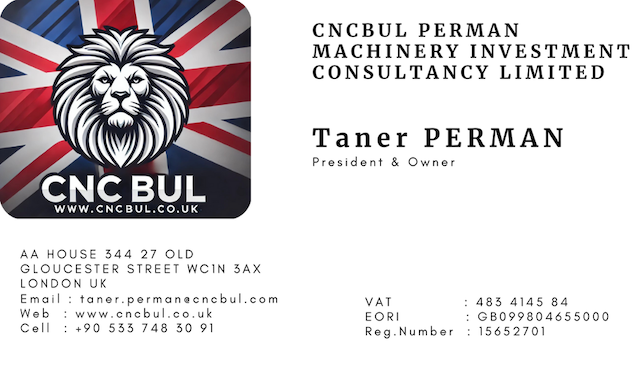What is Robotic Parts Loader for CNC Lathe & CNC Vertical Center?
A Robotic Parts Loader for CNC (Computer Numerical Control) Lathe and CNC Vertical Center is an advanced automation solution designed to enhance the efficiency, precision, and productivity of CNC machining processes. These loaders are integrated systems that utilize robotic arms or gantry robots to automate the loading and unloading of raw materials and finished parts from CNC machines. Here’s an in-depth technical explanation:
Components and Mechanisms
1. Robotic Arm/Gantry System
Robotic Arm:
- Typically, a multi-axis robotic arm (usually 6-axis) is used, capable of a wide range of motion including rotation, pivoting, and extending.
- Equipped with end-effectors or grippers designed to handle specific parts or materials. These can be pneumatic, hydraulic, or electric grippers.
- Advanced models may have force sensors and vision systems for precise part handling and alignment.
Gantry System:
- Consists of a robotic arm mounted on a gantry structure, allowing movement along multiple axes (X, Y, and Z).
- Suitable for handling larger and heavier parts with higher precision and speed.
2. Control System
- The robotic loader is controlled by an advanced control unit that interfaces with the CNC machine’s control system.
- Programmable Logic Controllers (PLCs) and Human-Machine Interfaces (HMIs) are used for programming and operation.
- The control system synchronizes the robot’s movements with the CNC machine’s cycle times to ensure seamless operation.
3. Vision System
- High-resolution cameras and image processing software are often integrated to identify and locate parts.
- Vision systems assist in orienting parts correctly before loading into the CNC machine, ensuring accurate machining.
4. Safety Features
- Equipped with safety sensors and interlocks to prevent collisions and ensure safe operation.
- Light curtains, safety mats, and emergency stop buttons are standard safety features.
- Collaborative robots (cobots) may have additional safety features allowing them to work alongside human operators safely.
5. Feeding and Storage Mechanisms
- Parts feeders such as bowl feeders, vibratory feeders, and conveyor systems are used to supply raw materials to the robot.
- Storage racks or pallets may be integrated for organizing and staging parts before and after machining.
- Automated Guided Vehicles (AGVs) or Automated Storage and Retrieval Systems (AS/RS) can be used for higher levels of automation.
Functionality and Workflow
- Part Loading:
- The robotic arm picks up a raw part from a feeder or storage location using its gripper.
- The vision system checks the orientation and position of the part, making necessary adjustments.
- The arm moves the part to the CNC machine, aligning it precisely with the machine’s chuck or fixture.
- Machining Process:
- The CNC machine performs the programmed machining operations on the part.
- During this process, the robot may remain idle or prepare the next part for loading.
- Part Unloading:
- Once machining is complete, the robot retrieves the finished part from the CNC machine.
- The part is then placed on a conveyor, pallet, or storage location for further processing or inspection.
- Continuous Operation:
- The robotic loader operates in a continuous cycle, minimizing downtime and maximizing the CNC machine’s utilization.
- The control system ensures that the robot and CNC machine are perfectly synchronized for optimal efficiency.
Benefits
1. Increased Productivity:
- Automation reduces cycle times and increases throughput, enabling 24/7 operation without manual intervention.
2. Enhanced Precision:
- Robots offer high repeatability and precision, ensuring consistent part quality and reducing errors.
3. Labor Savings:
- Reduces the need for manual labor, allowing operators to focus on more complex and value-added tasks.
4. Improved Safety:
- Automating the loading and unloading process reduces the risk of injuries associated with manual handling of heavy or sharp parts.
5. Flexibility:
- Robotic loaders can be reprogrammed for different parts and operations, providing versatility for various production needs.
6. Cost Efficiency:
- Although the initial investment is high, the long-term savings in labor costs, increased production rates, and reduced waste result in significant cost benefits.
Integration and Customization
- Robotic parts loaders can be customized to suit specific CNC lathe and vertical center configurations and requirements.
- Integration with existing CNC systems requires careful planning, including considerations for space, part flow, and interfacing with other automated systems.
- Advanced software tools are available for simulating and optimizing the robot’s movements and interactions with the CNC machines.
Technological Advancements
1. Artificial Intelligence (AI):
- AI algorithms enhance the robot’s decision-making capabilities, improving efficiency and adaptability to varying production scenarios.
2. Internet of Things (IoT):
- IoT connectivity allows for real-time monitoring and remote control of robotic loaders, enabling predictive maintenance and data-driven optimizations.
3. Machine Learning:
- Machine learning techniques help in analyzing performance data, identifying patterns, and optimizing operational parameters for better productivity and quality.
In summary, a Robotic Parts Loader for CNC Lathe and CNC Vertical Center is a sophisticated automation solution that significantly enhances the efficiency, precision, and safety of CNC machining operations. By leveraging advanced robotics, control systems, and integration technologies, these loaders provide substantial benefits in terms of productivity, quality, and cost savings.

